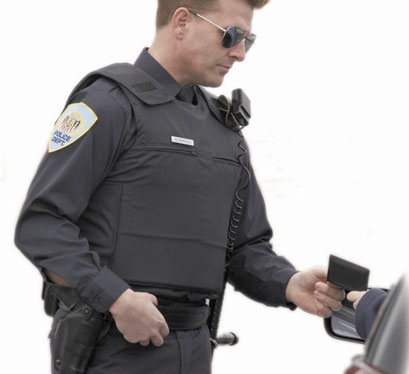Numbers Hollister Police Chief Miller called
”
consistent with reduction in staffing in recent years
”
indicate there were 624 fewer citations issued in 2007 by the
department compared with the previous year.
Numbers Hollister Police Chief Miller called “consistent with reduction in staffing in recent years” indicate there were 624 fewer citations issued in 2007 by the department compared with the previous year.
But even with Hollister merely starting to ramp up staffing levels, the 2008 numbers already show a likely rebound from the more than 30 percent drop in citation enforcement last year.
As of Tuesday, Hollister police had issued nearly as many citations in 2008 – 1,270 – as were written in all of 2007 when there were 1,352, according to numbers released this week by the HPD. It also puts this year on pace to match citation figures from before the budget cuts.
Matters that end up as citations tend to be low-grade misdemeanors and serve as a general indicator of police presence in a community. They include such crimes as alcohol-related offenses, petty theft and traffic violations.
While the department has added just one officer so far from the Measure T sales-tax revenue filtering in since April, the chief said police are learning to do more with less.
“Each day, each week, each month, we have learned something,” Police Chief Jeff Miller said. “We have learned to police smarter, to do the best with what we have.”
Miller, for example, spoke about how in the past an officer might respond to a report of a residential burglary, gather all the facts, and then start writing the report in his patrol car.
“The department would be spread out very thin, and that officer would often get a call while writing the report. “That officer would then be compelled to pack everything up and respond immediately.”
Miller went on: “Now we look at the nature of the call that comes in when the report is being written. If it is a parking complaint, or a report of someone speeding, the officer will now complete his report and then go and address the problem.”
Miller indicated that this sort of efficient approach allows officers to get their reports done in a more streamlined fashion, which actually results in more response and investigative time.
Another example of “policing smarter” is when officers participate in directed patrol projects, he said.
They carefully observe problems on their beats such as bad traffic areas, places where fights or vandalism often occur or streets often hit by burglaries. They try to figure out when and where such problems most often occur and address them accordingly, he said.
A recent example of a directed patrol project was the department’s reaction to accidents that began to immediately occur when the Airline Highway/Sunnyslope Road detour went into effect.
Officers worked with Caltrans to re-cone the area, but also began patrolling heavily and citing drivers making illegal U-turns, speeding or otherwise engaging in dangerous behavior in the area.
Miller also noted how the department looked carefully at what services the community values most.
“We looked at our way of policing during the reduction,” he said, “what the people communicated to us as service levels were adjusted.”
Miller believes that increase in police efficiency resulted in the citation numbers returning to normal levels this year.
“Less fluff and more stuff,” said Miller, adding that with the lessons learned and the future increased personnel from Measure T funds, Hollister can look for a more efficient, better staffed police force.










